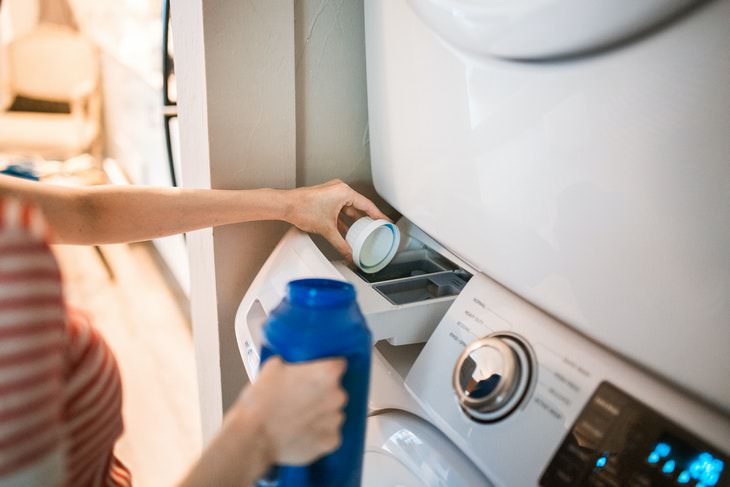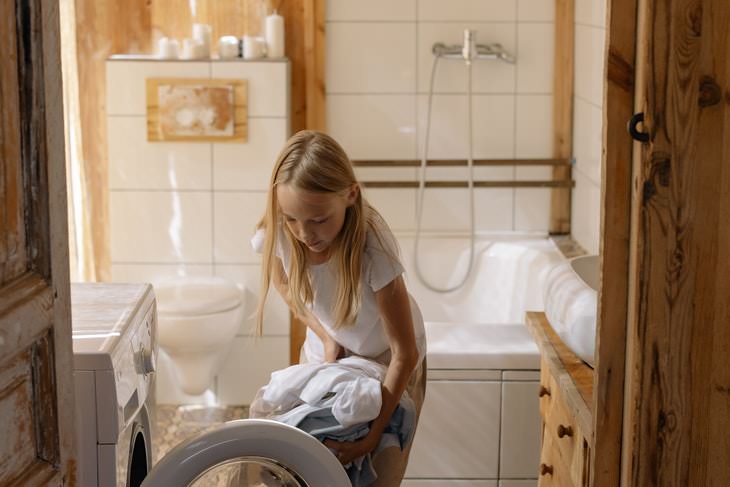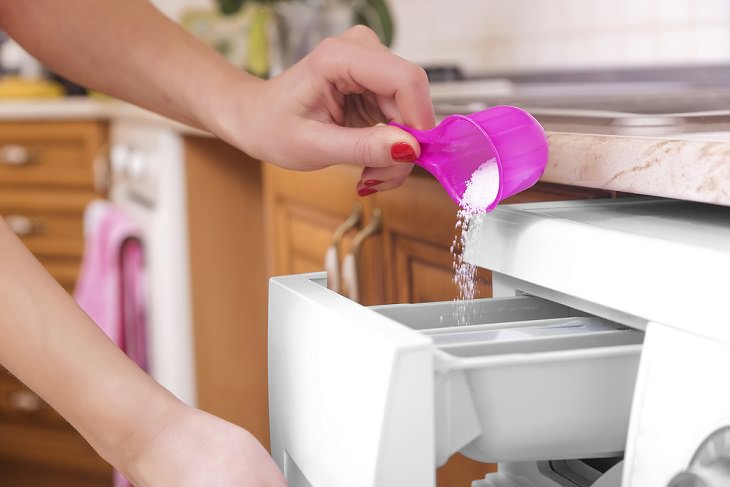How using an excessive amount of laundry detergent affects the laundry

If you’re not sure whether or not you’re using too much detergent when doing laundry, watch out for these telltale signs.
1. Watch out for unpleasant smells
Does freshly washed laundry smell bad? Moreover, you start noticing that the washing machine itself starts smelling musty or moldy? Any of these signs point to the overuse of laundry detergent, as the soap particles tend to build up in the fabrics and inside your washing machine.
If you notice unpleasant smells inside the washing machine, start by cleaning the washing machine inside and out. Proceed by adding 1 cup of baking soda into the drum of the machine and running a short cycle on the highest temperature setting. Now your washer is ready for work once again.
Unpleasant smells are more likely to occur with gel detergents and laundry pods. Switch to a powder detergent if the issue persists even after you’ve reduced the quantity of the detergent.
Related Article: Laundry Detergent Is SO Versatile: 8 Genius Home Uses
2. The texture or color of the clothes is altered
Does the laundry feel sticky or slimy to the touch right after the wash? Do dry clothes feel stiff or hard to the touch? Do colored clothes start fading just after a few washes, and do your white clothes turn grayish? All of these issues are usually caused by your laundry detergent. Calibrating the perfect amount for your specific washing machine can help mitigate any of these issues.
How much detergent should you use?
The amount of detergent you should use per cycle depends on the type of detergent, the type of washing machine you have, and even on how hard or soft the water is in the area you live. We review all of these factors below, but before we do so, here’s a universal piece of advice. If you’re using powder or gel detergent and not laundry pods, make sure to measure out the amount of detergent you use instead of eyeballing it. This will give you the best results and save you a pretty penny in the long run too.
Traditional washing machines require ¼ cup of powder detergent or 2 tablespoons of liquid detergent per wash. If the load is really soiled or covered in dirt, you can increase the amount of powder detergent to ½ cup per load. But this should be a rare occasion for most people.
If your washing machine has a larger drum, you’ll need to use a bit more detergent than these instructions - around ⅓ cup powder detergent and 2½ tablespoons of liquid detergent. Generally speaking, top-loading washing machines use more water per cycle, so they will be able to handle a bit more detergent too without any dire effects. This, however, doesn’t mean that you should use more detergent, as you’ll still be washing money down the drain - literally.
Have you recently updated your washing machine?
If so, chances are, you got a high-efficiency (or HE) washer, which uses a lot less water and is much gentler on the fabrics. HE washers require dedicated HE detergents that don't foam up, so using regular detergent may lead to excessive suds.
Since these washing machines use much less water during the washing and rinsing cycle, they require much less detergent too. More specifically, use 2 tablespoons of powder detergent or 2 teaspoons of liquid detergent. Using excessive amounts of detergent or the wrong kind of detergent will leave your clothes sticky and soapy.
Lastly, keep in mind that the water quality in your area impacts the cleaning power of liquid laundry detergents (as well as all other cleaning products and even things like your shampoo). Detergents foam up better in soft water than hard water, so reduce the amount of liquid detergent to 1½ tablespoons for a standard washer and 1½ teaspoons for an HE washing machine if you live in an area with soft water. Likewise, if you live in an area with hard water, increase the amount of liquid detergent by ½ tablespoon per wash for standard washing machines and ½ teaspoon for high-efficiency models.
These are all the basics you should know about measuring out laundry detergent.
If you found this article useful, please share it with others



